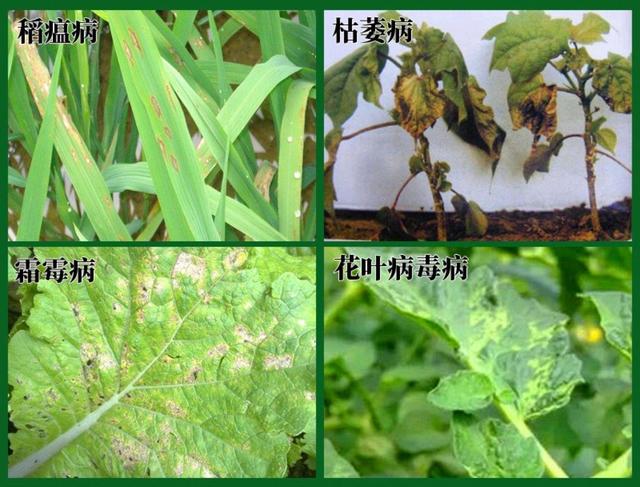In the development process of fungicides, new compounds appear every year, and the bactericidal effect of the new compounds is also very obvious. Happening. Today, I will introduce a very “special” fungicide. It has been used in the market for so many years, and it still has outstanding bactericidal effect and low resistance. It is “chlorobromoisocyanuric acid”, and the characteristics and application technology of this product will be specifically shared below.
Basic information on chlorobromoisocyanuric acid
Chlorobromoisocyanuric acid, referred to as “Xiaobenling”, is an oxidizing disinfectant widely used in water companies, swimming pools, medical places, sanitation departments, agriculture, animal husbandry and aquatic products, etc. In agriculture, 50% chlorobromoisocyanuric acid is generally used. As a high-efficiency, broad-spectrum, new systemic fungicide, it can kill various bacteria, algae, fungi and germs.
Product characteristics of chlorobromoisocyanuric acid
Chlorobromoisocyanuric acid can slowly release Cl and Br when sprayed on the surface of crops, forming hypochlorous acid (HOCl) and bromic acid (HOBr), which have strong killing, systemic absorption and protection to crop bacteria, fungi and viruses It has dual functions, so it has a strong effect of killing fungi and bacteria, and also has a strong killing effect on virus diseases of crops, and the cost performance is very high. It has the advantages of low toxicity, no residue, and low resistance for long-term use on crops, which is more suitable for the needs of pollution-free vegetable production. At the same time, it can quickly repair the disease spots infected by plant pathogens, without any effect on the waxy layer of plants, and it is safe for plants.
Control objects of chlorobromoisocyanuric acid

It has special effects on rice bacterial blight, bacterial streak, rice blast, sheath blight, bakanae and root rot;
It has special effects on vegetable rot (soft rot), virus disease and downy mildew;
Effective on melon (cucumber, watermelon, wax gourd, etc.) angular spot, rot, downy mildew, virus disease, and fusarium wilt;
It has special effects on bacterial wilt, rot and virus diseases such as pepper, eggplant and tomato;
It has special effects on leaf and stem rot of peanut and oil crops;
It has special effects on root rot and base rot of tulips, plants and flowers, and lawns;
It has special effects on ginger and ginger blast and banana leaf spot;
It has marked effects on citrus canker, scab, apple rot, pear scab, and has special effects on peach perforation, grape black pox and potato blight;
In addition, it can also be used for decontamination, disinfection, sterilization, algae removal of industrial circulating water (including the removal of algae epiphytes on ships), disinfection of aquatic products, fish ponds, poultry and livestock houses, disinfection of silkworms, industrial water, drinking water, fruits and vegetables. , swimming pool disinfection, household hygiene, hospital surgical instruments, blood-stained clothes, utensils, bathtub disinfection and sterilization, printing and dyeing, paper industry sterilization and bleaching, and have a strong control effect on hepatitis viruses, bacteria, fungi, spores, etc.
How to use chlorobromoisocyanuric acid
Vegetable crops: Use 20 grams of water and 15 kilograms of water to spray evenly on the foliar spray, which can effectively prevent the occurrence of various diseases.
Vegetables and melon crops: For soil treatment, use 2-3 kg of mixed soil for spreading per mu of land, and then turn the soil for irrigation and stuffy sheds.
Fruit tree crops: Use 1000-1500 times of liquid for foliar spraying for uniform spraying, which is especially suitable for rapid sterilization after the rainy season.
Fruit tree crops: To prevent rot, use 100-150 times of liquid mixed with thiophanate-methyl to smear dry branches.
Rice: Use 40-60g/mu for foliar spray with 60kg of water for the best effect.
Wheat and corn: For foliar spray, use 20 grams of water and 30 kilograms of water to spray evenly. It can be used in combination with other fungicides.
Strawberry: For soil treatment, use 1000 grams of water and 400 kilograms of water for drip irrigation, which can effectively prevent the occurrence of root rot.
Precautions for the use of chlorobromoisocyanuric acid
1. When using, be sure to dilute this agent before mixing it, and mix it with other products, so as to better exert its efficacy.
2. To prevent and control bacterial and viral diseases, it is best to mix protective fungicides to prolong the duration of the product.
3. It is not recommended to be used in combination with potassium dihydrogen phosphate products. It must be diluted twice when mixed with other trace elements and regulators.
4. Chlorobromoisocyanuric acid has a wide range of use and is not suitable for compound use with organophosphorus pesticides.
Post time: Aug-01-2022



